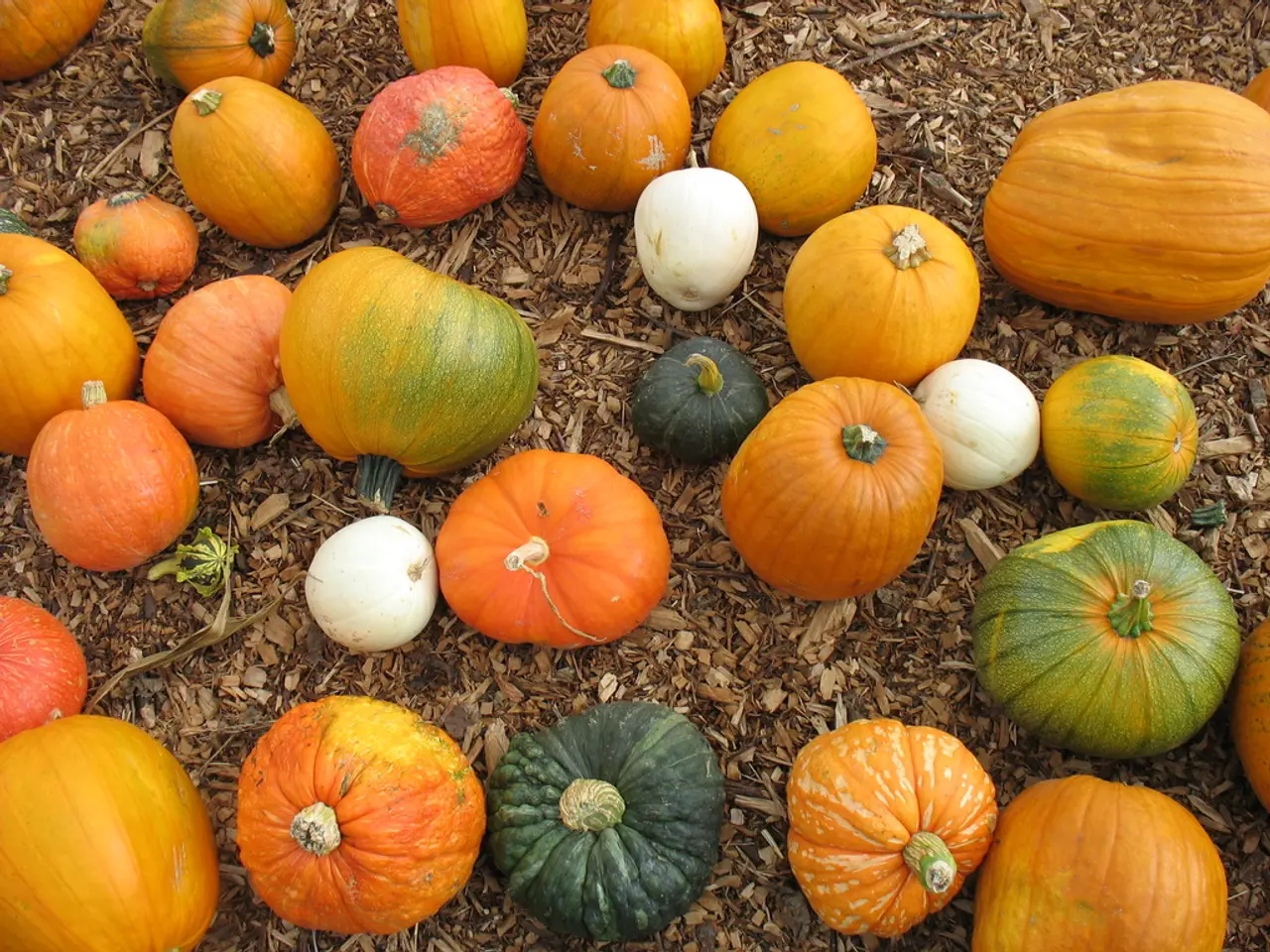Methods for nurturing and cultivating zucchini plants
Growing Organic Courgettes: A Step-by-Step Guide
Learn how to grow organic courgettes (zucchini) from sowing seeds indoors to successful outdoor harvest. This guide provides essential tips for caring for your courgette plants, ensuring a bountiful crop.
Sowing Seeds Indoors
- Fill pots or seed trays with organic seed compost, and sow seeds about 2 cm (1 inch) deep.
- Place the pots on a sunny windowsill or under grow lights to ensure plenty of light.
- Maintain a warm environment with an optimal soil temperature for germination of 75-85°F (24-29°C), with a minimum of around 60°F (16°C).
- Seedlings usually emerge in about one to two weeks and can be grown indoors for 4-5 weeks before planting out.
- During seedling growth, provide cool but well-lit conditions to avoid leggy plants.
Planting Out Young Plants
- Harden off seedlings for about 7-10 days by gradually exposing them to outdoor conditions, particularly sunlight and cooler nights.
- Choose a site with full sun exposure (at least six hours of direct sunlight per day).
- Ensure the soil is rich, well-draining, and slightly acidic to neutral (pH near 6.8).
- Plant the seedlings outdoors 1-2 weeks after the last frost, when soil temperatures are consistently warm (above 60°F, ideally 75-85°F).
- Space plants adequately to allow airflow and growth; courgette spacing typically is around 60-90 cm (24-36 inches) apart.
Ongoing Care
- Topdress with a balanced organic granular fertilizer at planting; as flowering approaches, switch to a fertilizer higher in phosphorus (e.g., tomato formula) to promote blooms and fruit development.
- Avoid excess nitrogen, which encourages leafy growth at the expense of fruits.
- Water regularly to provide 1-2 inches of water weekly, keeping soil moist but not waterlogged.
- Weed regularly to reduce competition.
- Encourage beneficial insects like bees and hoverflies for pollination, or hand-pollinate flowers if natural pollinators are scarce.
- Monitor plants for pests and diseases and use organic methods like encouraging natural predators or handpicking pests.
Varieties to Consider
- 'Venus': A compact patio variety, ideal in pots.
- 'Tondo di Nizza': Has tennis ball-sized, pale green fruit.
- 'Gold Rush': Long, golden-yellow fruits.
- 'Ambassador': Bears dark green fruit with a crisp white flesh over a long season.
- 'Zucchini': A prolific, classic green courgette.
- 'One Ball': Vibrant yellow, spherical fruits with a creamy flesh.
- 'Black Forest' and 'Tromboncino': Climbing courgette varieties.
- 'Defender': A heavy cropper with good disease resistance.
Potential Problems and Solutions
- In dry conditions, a courgette plant may only produce male flowers and not fruits. Keeping the soil consistently moist can help solve this problem.
- Grey mould (botrytis) is a common problem in damp or humid weather. Cut out any affected areas and remove any dead growth on the ground.
- Slugs and snails can destroy young courgette plants. Add protection as soon as plants are planted out.
- Courgette rot is a common problem in damp weather. Never water plants from above and remove any soggy flowers during wet weather.
- Powdery mildew affects the performance of courgettes. Healthy plants are less susceptible, so make sure they are well spaced and have good air circulation.
By following these steps, you create optimal conditions for organic courgette growth from seed indoors through to successful outdoor harvest. To grow a courgette successfully in a pot, choose a pot that's at least 45cm wide and high. To control slugs and snails organically, use crushed eggshells, a copper ring, or a biological pest control.
Incorporating organic pest control methods is essential to successfully grow organic courgettes in both home-and-garden settings and containers, such as crushed eggshells or a copper ring to deter slugs and snails. Maintaining a optimal lifestyle and gardening conditions like proper moisture levels and appropriate fertilization are crucial for a bountiful organic courgette harvest, as detailed in this step-by-step guide focusing on home-and-garden practices and pest control.




